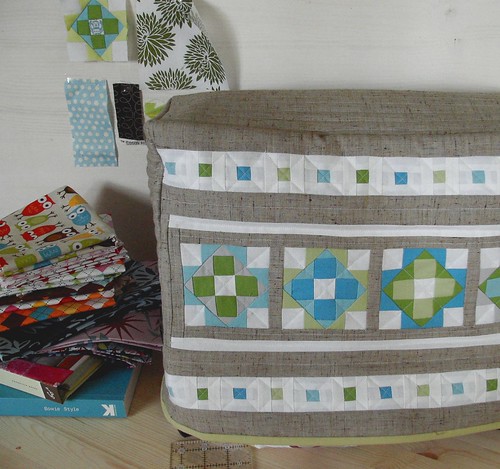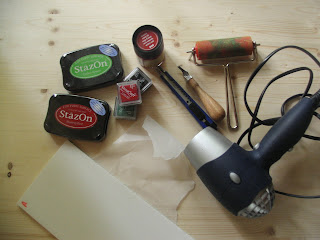
This was really a lot of fun. I am definitely hooked.
I started printing with the screen in contact with the fabric and this seemed to work well for me. I am sure though that these results will differ with different inks and fabrics.
I started printing with yellow ink and added red later without washing out the screen. A few of my prints are a mixture of yellow, red and orange and I really like the effect. This is something I want to have a play around with later.
In general the prints came out well. Some were patchy in places due to uneven pressure with the squeegee or too little ink. A couple of the shapes were not totally intact. They obviously still had traces of screen filler.

The yellow ink was much more forgiving than the red ink! It was a slightly thinner consistency and made the berry shapes look more rounded.

A disadvantage of using drawing fluid is that it is hard to get crisp edges. But I have to say that I like the resulting prints. I am planning to make these into the backing of a quilt for our bed. I like the unevenness of the prints as I think they will add character to the backing fabric. In any case they will be a fond reminder for me of my first printing effort!
All in all a lot of fun and luckily for me Hanna slept through the whole thing. Including washing up the screen afterwards. I was afraid that she might wake up mid print which would have been a disaster as you have to work quickly.
Now I can't wait to have another go!
Great sites to check out:- Celestina Carmen has written a good post at length about the importance of off-contact.
- Mon Lapin - a detailed part 2 to screenprinting with drawing fluid. Discusses whether to have the screen in contact with your paper or fabric.






















































